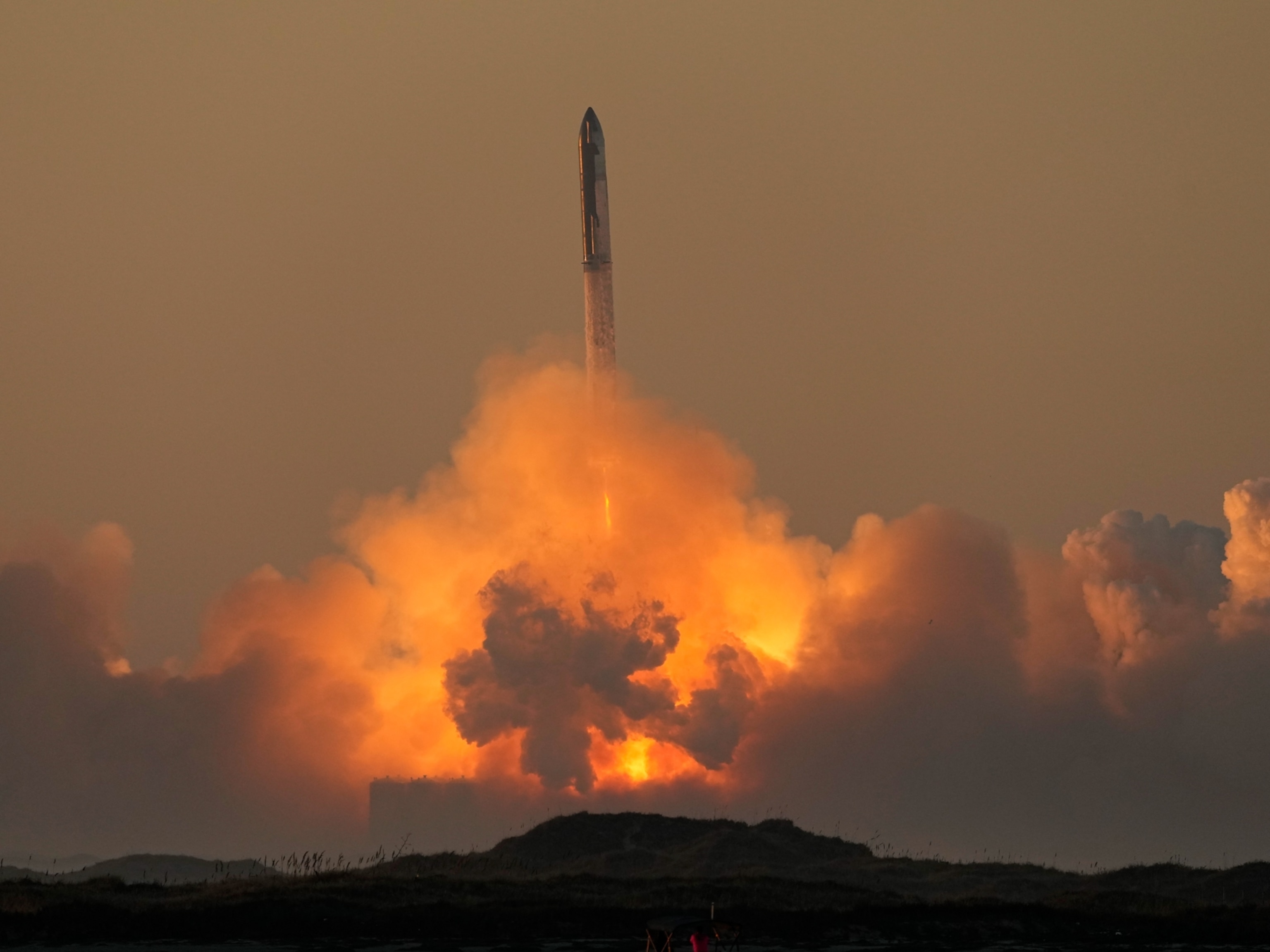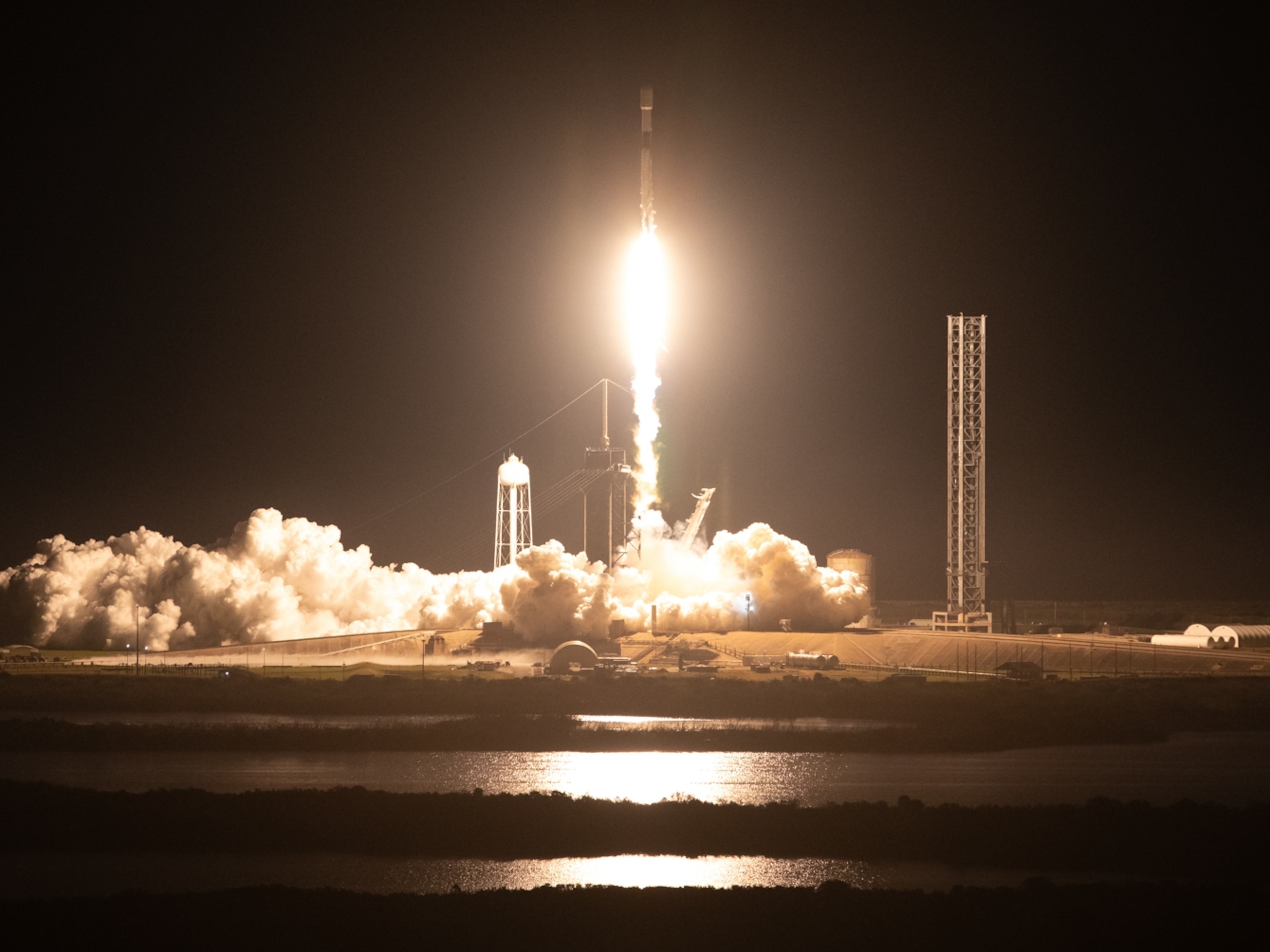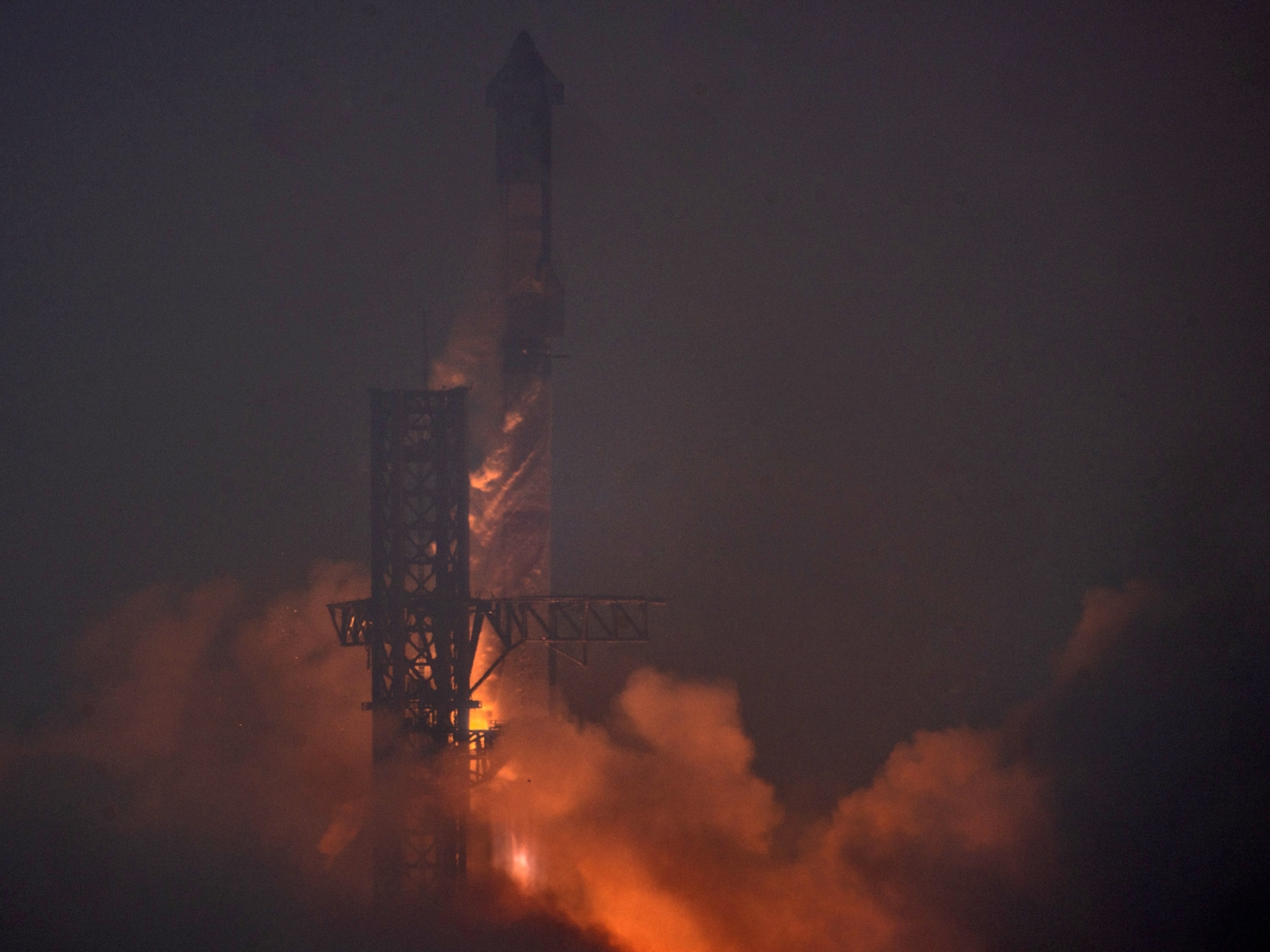
SpaceX Makes History With First-Ever Recycled Rocket
A booster that flew to space last year made the trip again and returned to Earth, marking a major step on the road to cheaper space travel.
One rocket (first stage), gently used. Minimal mileage, moderate lift capacity, best used for delivery of goods to Earth-orbit. 100% success rate! Price ~$62 million, OBO given pre-flown condition (though we prefer to think of this as “flight proven”).
In a milestone for the private spaceflight company, SpaceX today successfully launched a reused Falcon 9 rocket booster into space—the same first stage that carried a bouncy house into space last year.
The rocket booster had previously stuck a spectacular landing on a drone ship floating off the Florida coast, playfully named “Of Course I Still Love You.”
That reused booster stuck its landing again on Thursday, and on the same drone ship no less, after blasting off from Cape Canaveral, Florida. This time, the rocket wasn’t carrying an inflatable space pod, but was instead delivering a communications satellite to orbit for a company called SES.
The rocket’s vertical touchdown marks the ninth successful SpaceX landing in 14 tries, six of which have been on ships floating offshore.
Last April, SpaceX launched an inflatable habitat to the International Space Station—and then successfully turned the first stage of its Falcon 9 rocket around, flew it back to Earth, and parked it on a drone ship floating 185 miles off the U.S. East Coast.
“The rocket landed instead of putting a hole in the ship, or tipping over, so we’re really excited about that,” said SpaceX founder Elon Musk at a press conference after the landing.
After launching from Cape Canaveral, the SpaceX rocket boosted its payload-carrying Dragon capsule toward low-Earth orbit, then turned around and headed for home about 4.5 minutes after launch. As it approached the drone ship, the Falcon 9 righted itself, slowed down, and landed perfectly.
“The 1st stage of the Falcon 9 just landed on our ‘Of Course I Still Love You’ droneship. Dragon in good orbit,” Space X tweeted, in what must be the most understated announcement of the successful landing to cross our feed.
To space and back, in less than nine minutes? Hello, future.
In 2015, the company successfully set a rocket back down on the ground, but landing at sea is much trickier than landing on … land … because the ocean is a moving beast. Previous attempts failed when earlier rockets toppled over and experienced a “rapid unscheduled disassembly” (i.e., they exploded).
Musk said that before that April launch, company members were placing the odds of success at 2:1. “We thought it was more likely than not that this mission would work, but still probably have a 1/3 chance of failure,” Musk said. “It’s still quite tricky to land on a ship … it’s quite a tiny target.”
The name of the game here is making spaceflight cheaper by developing reusable rockets that can ferry people and cargo into orbit, instead of spending millions of dollars building new launch rockets. Blue Origin, a company owned by Jeff Bezos, is also working on reusable rocket systems, and has successfully landed its New Shepard rocket on the ground multiple times.
Musk and his team hope that once reusable rockets become more than a mere curiosity, they’ll help reduce the often prohibitive costs of space travel, which is crucial for Musk’s ambitious plan to populate Mars within a few decades.
His next goals include two successful launches of the same booster within 24 hours.





